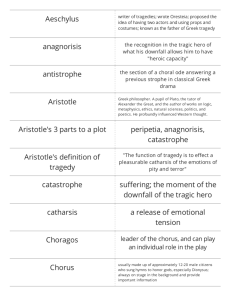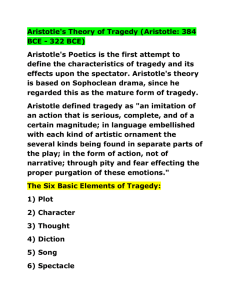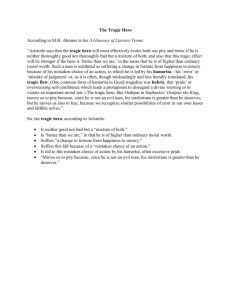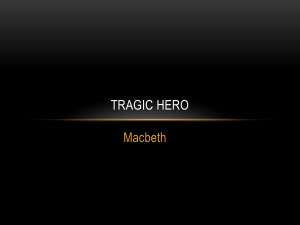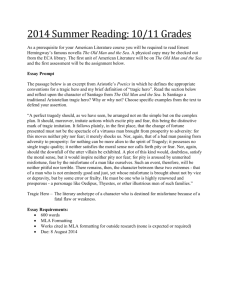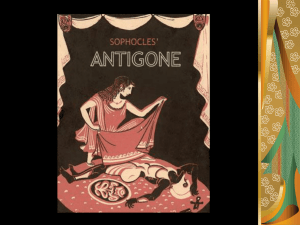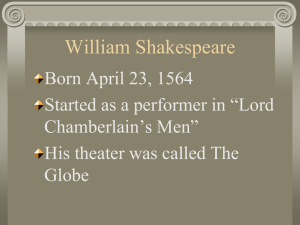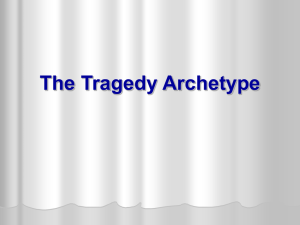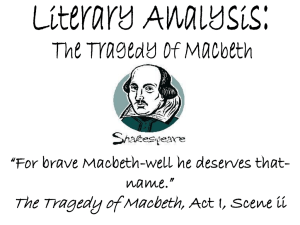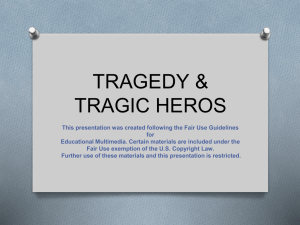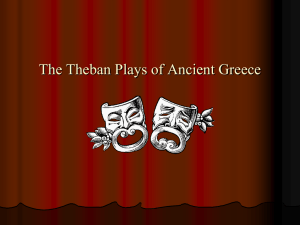Introduction To Greek Theatre
advertisement
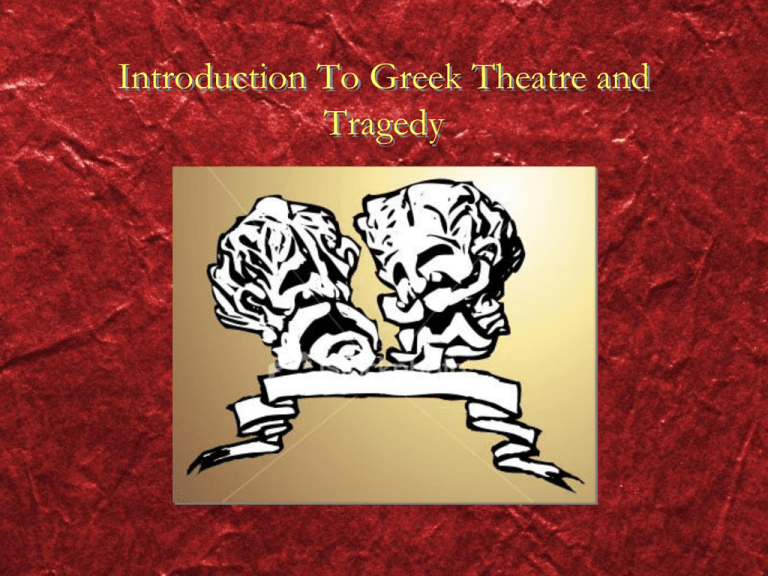
Introduction To Greek Theatre and Tragedy Genre: Greek Tragedy • the word "tragedy" refers primarily to tragic drama: a literary composition written to be performed by actors in which a central character called a tragic protagonist or hero suffers some serious misfortune which is not accidental and therefore meaningless, but is significant in that the misfortune is logically connected with the hero's actions. Tragedy stresses the vulnerability of human beings whose suffering is brought on by a combination of human and divine actions, but is generally undeserved with regard to its harshness . The Acropolis The Parthenon Theatre of Dionysus Theatre of Dionysus Side by Side Greek Masks • Functions of Greek Masks Portrayed different emotions Amplified voices Allowed actors to portray different characters Attire • • • • The Chiton Chotharnus- elevating shoes Chalmys- short cloak Himation- long cloak Qualities of Greek Drama o o o o Performed on special occasions or festivals for worshipping Dionysus Competitive- prizes awarded (maybe a goat!) Choral-singing was very important, Greek Theatre evolved from from a chorus singing Closely associated with religion and worshipping gods. Structure of Greek Drama and Sophocles’ Plays Here are a few characteristics of the structure of Greek Drama: Violence and Death Offstage § Frequent use of messengers to relate information § Usually a single place (setting) § Stories based on myth or history, but varied interpretations of both Here are some characterisitics of a Sophocles’ play: § Emphasis on individual chatacters § Reduced role of the Chorus § Complex characters, psychologicall well-motivated § Characters subjected to crisis which leads to suffering and self-recognition § Common Theme: The choices people make and consequences The Greek Chorus • § § § § The Chorus began in numbers as large as 50, then smaller sizes as actors become more predominate. They provided time for scene changes, introduced background and summary information. Their dance and chanting provided the visionary experience that separated audience from the actor and the essence of tragedy. Ideal spectator: reacts as the audience should. Asks questions, takes part in the play Establishes framework, sets the standard by which action will be judged Heightens dramatic effect through movement, song and dance Rhythmical Function-pauses/paces the action so audience can reflect and actors can rest/prepare So What does all this mean? • • • • Big Theatre Big Characters Big Emotions Big Consequences- for one person! Who could that be! THE TRAGIC HERO! Aristotle’s Tragic Hero キ Tragedy should evoke a sense of pity and fear in the audience キ Tragedy can only arouse the sense of pity and fear if the hero is neither completely good nor completely bad キ The tragic hero should be highly renowned and prosperous because the hero must fall from tremendous good fortune in order to feel pity and fear キ The hero experiences a downfall because of their “error or frailty. This means either: ァ their tragic flaw ( a fundamental character weakness, such as destructive pride, ruthless ambition or obsessive jealousy.) • or ァ a single error of judgment Tragic Hero Continued キ Regardless of how one interprets the “error or frailty”, the key point is that the hero is on some level responsible for their downfall. キ By the end of the play the hero comes to recognize their error and accept the consequences as their own fault キ The real tragic hero is humbled and enlightened b the tragedy キ The tragic hero evokes our pity because he is not evil and his misfortune is greater than he deserves, and he evokes our fear because we realize we are fallible and could make the same error
